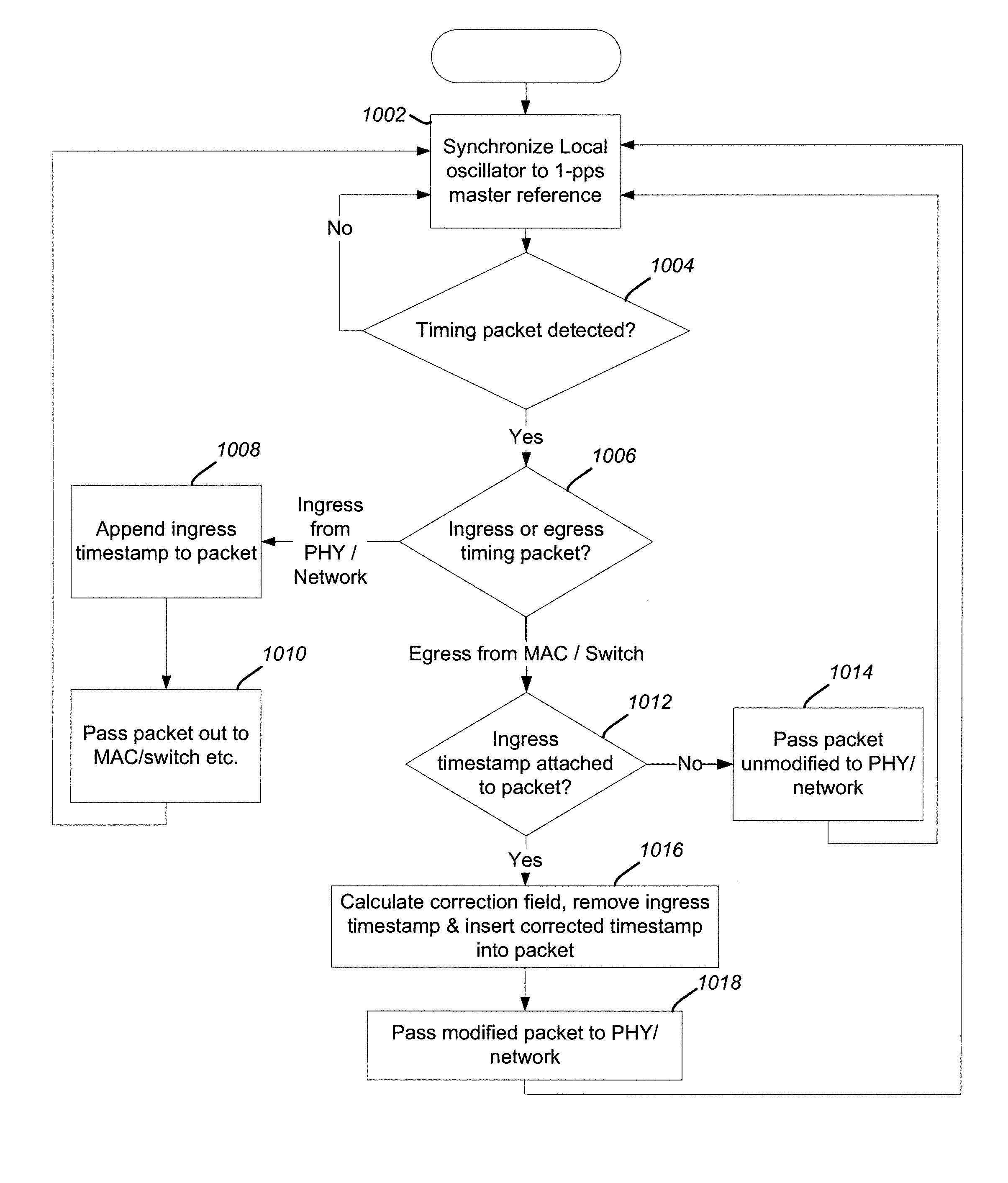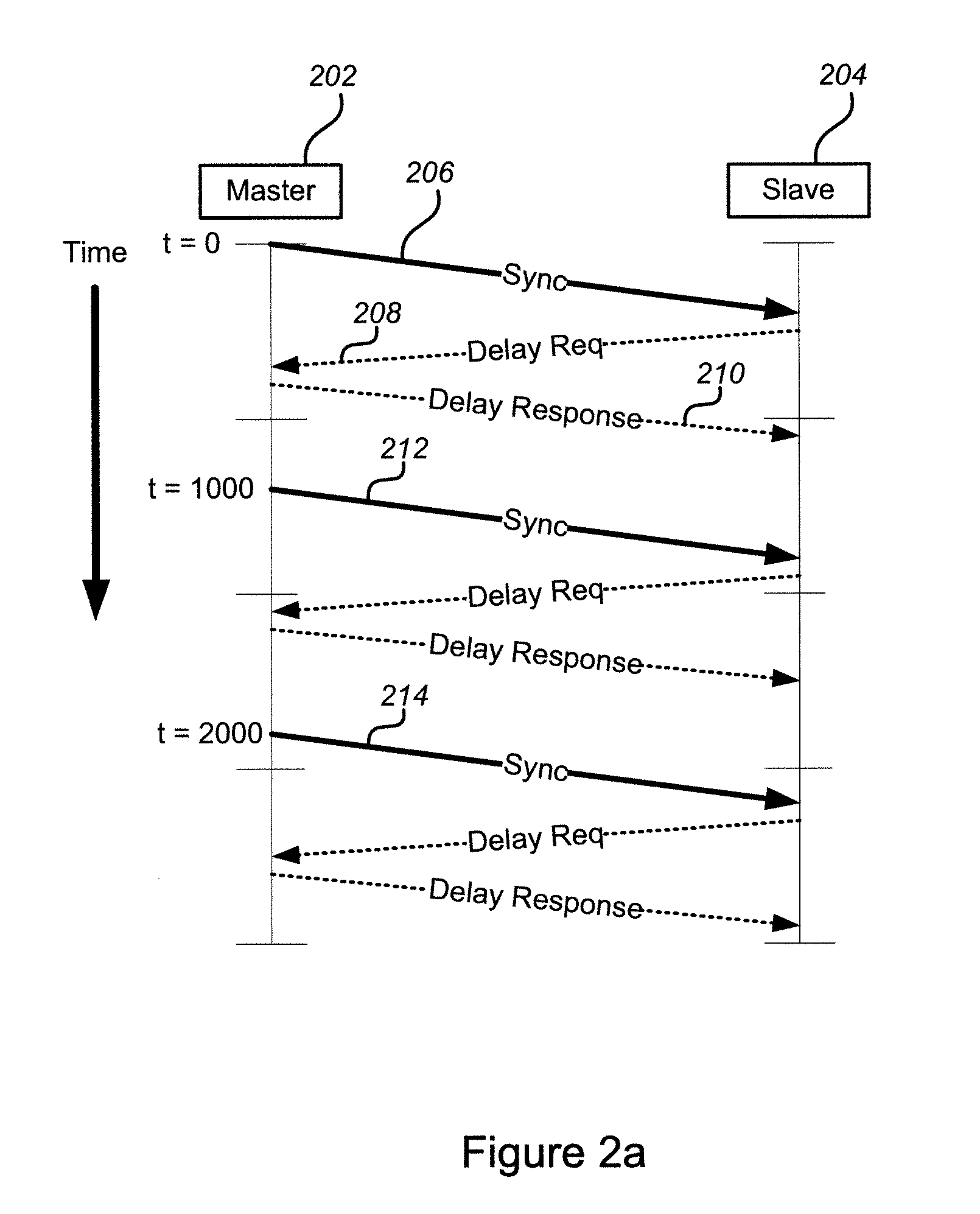Measurement and adjustment of real-time values according to residence time in networking equipment without access to real time
a technology of real-time value and network equipment, applied in the field of synchronizing time clocks, can solve the problems of ntp being prone to traffic-dependent latencies, consuming a significant fraction of the resources and costs of running a network, and posing significant challenges
- Summary
- Abstract
- Description
- Claims
- Application Information
AI Technical Summary
Benefits of technology
Problems solved by technology
Method used
Image
Examples
Embodiment Construction
[0028]The invention provides an apparatus and method for improving PTP time recovery in packet-switched networks that can be readily applied to existing Ethernet networks. FIG. 1 depicts a typical system providing packet synchronization over a packet network using IEEE-1588. A master unit 102 may be implemented as a ToPSync unit configured to act as a master device. As such, it may receive an input from a Coordinated Universal Time (UTC) reference 110 that delivers precision real time. The UTC unit 110 may comprise a global positioning system (GPS) receiver or similar device. A master timing unit has an internal timebase driven by its own local oscillator 112. The master unit aligns its timebase with the UTC reference 110 such that it generates time-stamped time-synchronization packets that are distributed via packet network 104 to one or more slave devices 106 and 108. In one implementation, the master unit may be a ToPSync module. However, the invention is equally applicable to ot...
PUM
 Login to View More
Login to View More Abstract
Description
Claims
Application Information
 Login to View More
Login to View More - R&D
- Intellectual Property
- Life Sciences
- Materials
- Tech Scout
- Unparalleled Data Quality
- Higher Quality Content
- 60% Fewer Hallucinations
Browse by: Latest US Patents, China's latest patents, Technical Efficacy Thesaurus, Application Domain, Technology Topic, Popular Technical Reports.
© 2025 PatSnap. All rights reserved.Legal|Privacy policy|Modern Slavery Act Transparency Statement|Sitemap|About US| Contact US: help@patsnap.com



